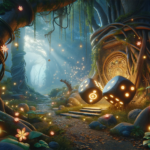The intersection of game theory and sports strategy represents one of the most fascinating frontiers in athletic competition. While coaches and players have always made strategic decisions, the formal application of mathematical decision-making frameworks offers unprecedented opportunities to gain competitive advantages. Game theory—the study of mathematical models of strategic interaction—provides powerful tools for understanding and optimizing the complex decisions made during competition. As professional sports continue evolving into data-driven enterprises, the teams that effectively integrate these theoretical frameworks with traditional analysis gain significant edges over their competitors.
Nash Equilibrium in Mixed-Strategy Scenarios
When I played baseball in college, our pitching coach constantly preached unpredictability—throw the fastball when they expect a breaking ball, mix locations, never establish patterns. He understood Nash Equilibrium decades before I learned the term in economics class. The concept perfectly explains why elite pitchers rarely throw 100% fastballs despite having devastating velocity. If batters could predict with certainty what’s coming, even the fastest pitches become hittable. The equilibrium emerges when both pitcher and batter adopt optimal mixed strategies—the pitcher varies pitches so the batter gains no advantage by guessing, while the batter prepares for multiple possibilities. You see this dynamic everywhere in sports: tennis players alternating between cross-court and down-the-line shots, soccer goalkeepers guessing directions on penalty kicks, or basketball defenders deciding whether to commit to stopping drives or contesting jump shots. The teams and athletes who intuitively or deliberately approach these Nash Equilibrium points gain subtle but crucial advantages over opponents who rely on predictable patterns or pure intuition.
Sequential Decision Games and Information Asymmetry
The beauty of card games lies in their perfect illustration of sequential decision-making under incomplete information. When teaching my nephew about online spades last summer, I realized the parallels to football strategy were uncanny. In both contexts, you make decisions sequentially while uncertain about your opponent’s capabilities. Just as a spades player must infer which cards remain in opponents’ hands based on previous tricks, a football coordinator adjusts defensive schemes based on observed offensive tendencies. The information asymmetry creates fascinating dynamics—teams deliberately show certain formations early in games to set up contrasting plays later when stakes increase. This strategic deception mirrors how experienced online spades players might deliberately lose certain tricks to conceal their true strength in a suit. The sequential nature creates path dependencies where early decisions constrain later options. Coaches who recognize these game theory structures develop more sophisticated strategic approaches, planning several moves ahead rather than optimizing each decision in isolation.
Minimax and Risk Minimization
The defensive genius Bill Belichick operates according to minimax principles whether he realizes it or not. His famous approach—taking away what opponents do best and forcing them into their second or third options—perfectly embodies the concept of minimizing maximum potential damage. This strategy acknowledges you can’t stop everything, so you prevent the worst possible outcomes while accepting lesser evils. I watched this unfold dramatically when his Patriots faced the high-powered Rams offense in Super Bowl LIII. Rather than trying to stop everything, his defense prioritized eliminating specific threats even at the cost of potentially conceding others. This minimax approach appears throughout sports—basketball teams forcing superstars to pass to less dangerous teammates, soccer formations designed to concede wide areas while protecting central spaces, or tennis players directing shots to opponents’ stronger wings to avoid devastating winners from their preferred side. The coaches who master this concept avoid the common trap of trying to defend everything equally, instead accepting strategic vulnerabilities to prevent catastrophic outcomes.
Pareto Efficiency in Resource Allocation
Every team faces the fundamental problem of resource allocation—how to distribute limited practice time, salary cap space, draft picks, or player development resources. Game theory’s concept of Pareto efficiency provides a powerful framework for these decisions. My conversation with an NBA front office analyst revealed how they apply this thinking when constructing rosters. They constantly evaluate whether resources could be redistributed to improve one aspect without harming others. Can they trade bench depth for star power? Sacrifice rebounding for improved perimeter defense? The Seattle Seahawks’ defensive dominance during the Legion of Boom era represented Pareto efficiency masterfully—they allocated resources heavily toward secondary personnel while compensating with scheme adjustments elsewhere. Similarly, baseball teams increasingly apply these principles when deciding whether to invest in starting pitching versus bullpen depth versus offensive production. The teams that achieve competitive advantages often discover Pareto improvements their competitors miss, finding unique resource distributions that maximize overall performance while accepting strategic tradeoffs in areas of lesser importance.
Evolutionary Game Theory and Strategic Innovation
Sports strategy evolves through cycles that perfectly mirror evolutionary game theory models. I’ve documented this process while researching offensive innovation in football over decades. Initially, a strategic innovation provides advantages because opponents lack effective counters—think of the wildcat formation or run-pass options when first introduced. As these strategies proliferate, defenses develop specific countermeasures, reducing their effectiveness. This creates selection pressure for further innovations, leading to continuous strategic evolution. The NBA’s three-point revolution followed this exact pattern—teams that recognized the mathematical advantages gained early advantages, forcing defensive adaptations, which then created opportunities for teams that could leverage those defensive adjustments with secondary innovations. The organizations that maintain competitive advantages understand this evolutionary cycle as an ongoing process rather than seeking permanent solutions. They invest in systematic innovation capabilities rather than simply copying current best practices. The most successful franchises essentially maintain their own research and development departments focused on staying ahead of these evolutionary cycles through continuous strategic experimentation.
Conclusion
The marriage of game theory and sports strategy represents a natural evolution in competitive analysis. However, the most successful practitioners recognize that game theory complements rather than replaces traditional analysis—mathematical models inform decisions but must account for the human elements of psychology, physical capability, and team chemistry that mathematics alone cannot capture. For fans and analysts alike, understanding these game theory principles adds another layer of appreciation for the strategic depth underlying physical competition.















